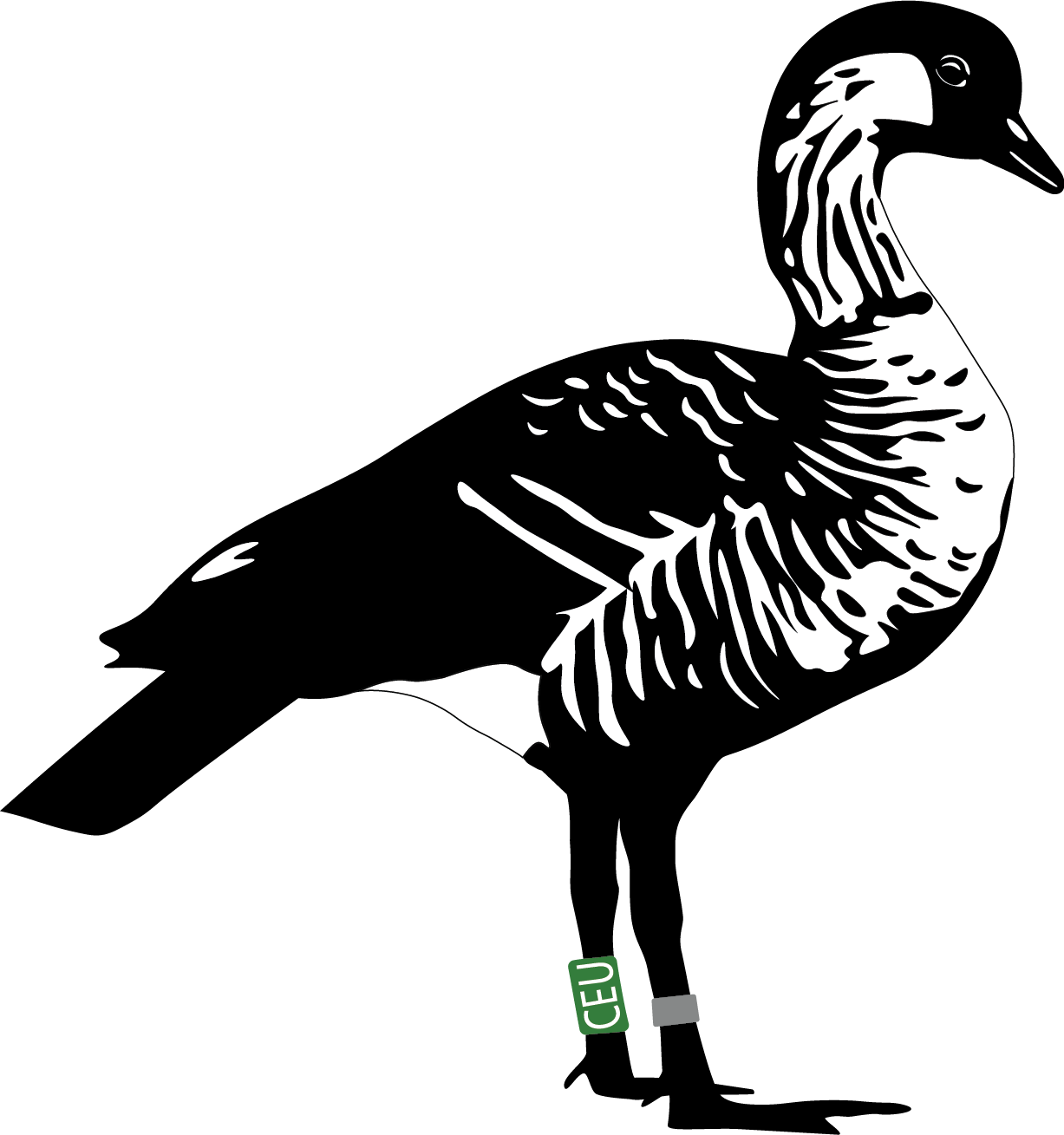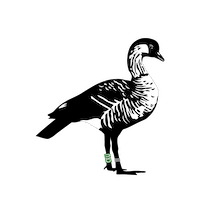History Of Nēnē Conservation
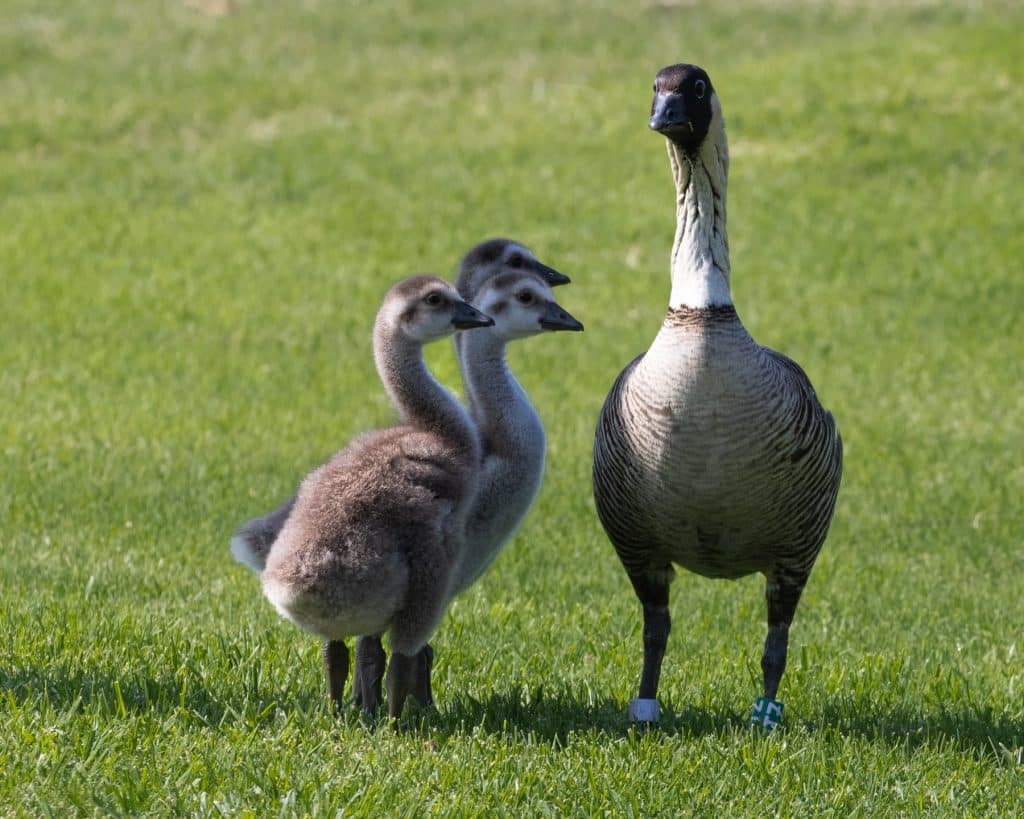
Nēnē, or Hawaiian Goose, is an emblematic species of the Hawaiian Islands, where it is both the official state and the formerly territorial bird.
Historical mentions of nēnē appear in accounts from western explorers after first contact in 1778 and by missionaries in 1823. It wasn’t until 1834 that nēnē were formally described by Nicholas Vigors from specimens sent by David Douglas.
The closest relatives of nēnē are Canada geese, with molecular evidence suggesting a divergence around 890,000 years ago. The subfossil record indicates the existence of at least three other goose species including one potentially flightless species on Hawai’i Island.
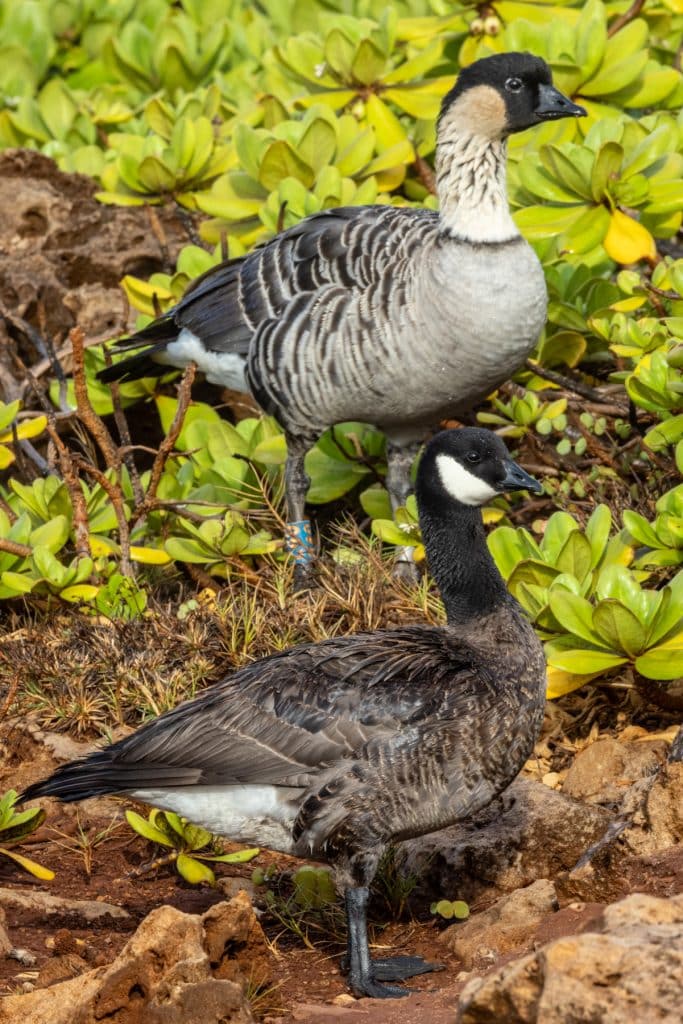
By the time nēnē were described, their range likely remained confined to the upper slopes of Maui and Hawai’i Island. Remnant populations on Moloka’i were reported into the 1920s. The nene population experienced a significant loss of genetic variability well before the historic decline in their numbers. Nēnē faced further declines in the late 19th century due to hunting, predation by introduced species, and habitat alteration. The total population dropped from around 25,000 in the late 1700s to just 20-30 in the wild and 13 in captivity by the 1950s.
Efforts to save nēnē from extinction began as early as the late 1920s. The Territory of Hawaiʻi appropriated funds towards recovery efforts in 1949. Captive breeding programs were established to rehabilitate the population. The propagation of the nēnē in captivity proved highly successful, with over 2,500 birds reared and released throughout the state from 1960 to 2000. While initial productivity in the wild was low, continued reintroductions and predator-control measures led to growing populations. The increasing population on Kaua’i and stable populations on Hawaii Island and Maui led to the end of breeding programs in 2011.
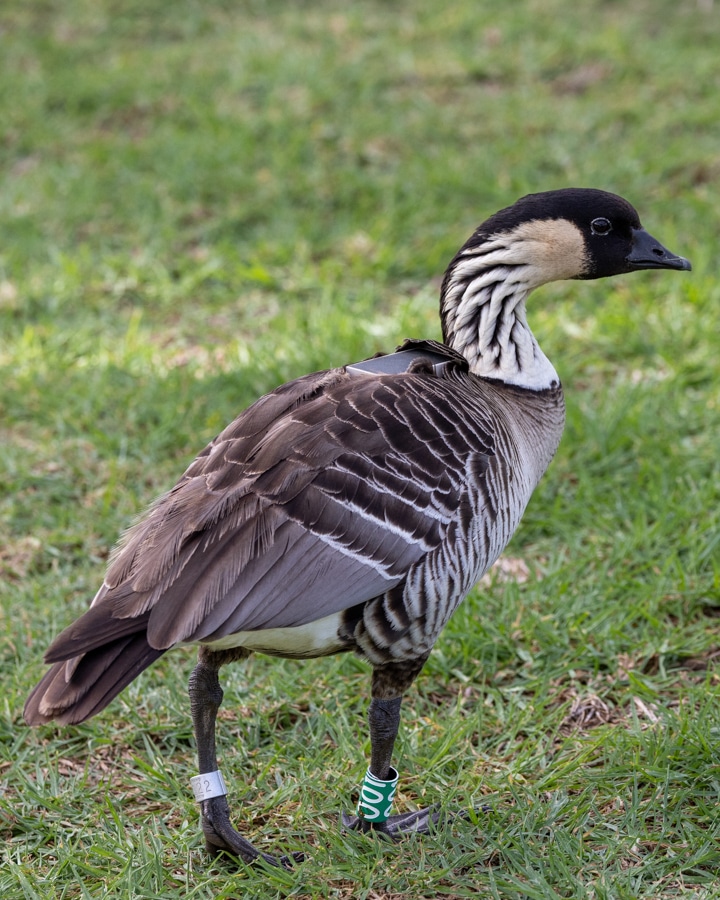
On Hawai’i Island, the nēnē population is stable with dispersal to areas where they were traditionally found. Here they breed and molt in scattered locations, and disperse upslope to dry subalpine scrub after breeding. On Maui, after the introduction of nēnē to Haleakala Crater in 1962 resulted in a population that rarely ventures to lower elevations. Nēnē can be found in lowland areas though the population is in decline. Kaua’i has the healthiest population likely due to the lack of mongoose. In 2011, Gov. Neil Abercrombie signed a proclamation to move all the nēnē out of Kauai Lagoons to prevent collisions with airplanes. These nēnē were translocated to Maui and Hawaiʻi Island over the course of a few years.
There are two known inter-island movements of nēnē from re-sightings of banded birds. The first occurred when a pair of nēnē where discovered nesting at James Campbell National Wildlife Refuge in 2014. This was the first time nēnē were observed on Oahu in the wild since the 1700s. This pair, identified as K59 and K60, were initially relocated to Hawaiʻi Island in 2012 and were likely attempting to return to Kaua’i. Sadly, the adult Nēnē and two goslings have since perished, and the sole surviving gosling (banded 001) was moved to a Big Island sanctuary. The second inter-island movement was recently discovered after we received new data from the U.S. Fish and Wildlife Service. The second inter-island movement also involved a nēnē that was relocated from Kaua’i. 3T8 was last seen on Hawaiʻi Island in 2014 and was found by the Hawaiʻi Department of Land and Natural Resources with a wing injury on Maui in 2022.
This is a brief overview of the history of nēnē and we will be updating it as we learn more. There is still lots of work to do, mainly with predator control and community involvement. Taking photos of banded nēnē and sending them to us is one of the best ways to help. We learn so much about their habitat usage, movements, and population dynamics from community sightings. They also help shape laws that improve conservation in Hawaiʻi.
